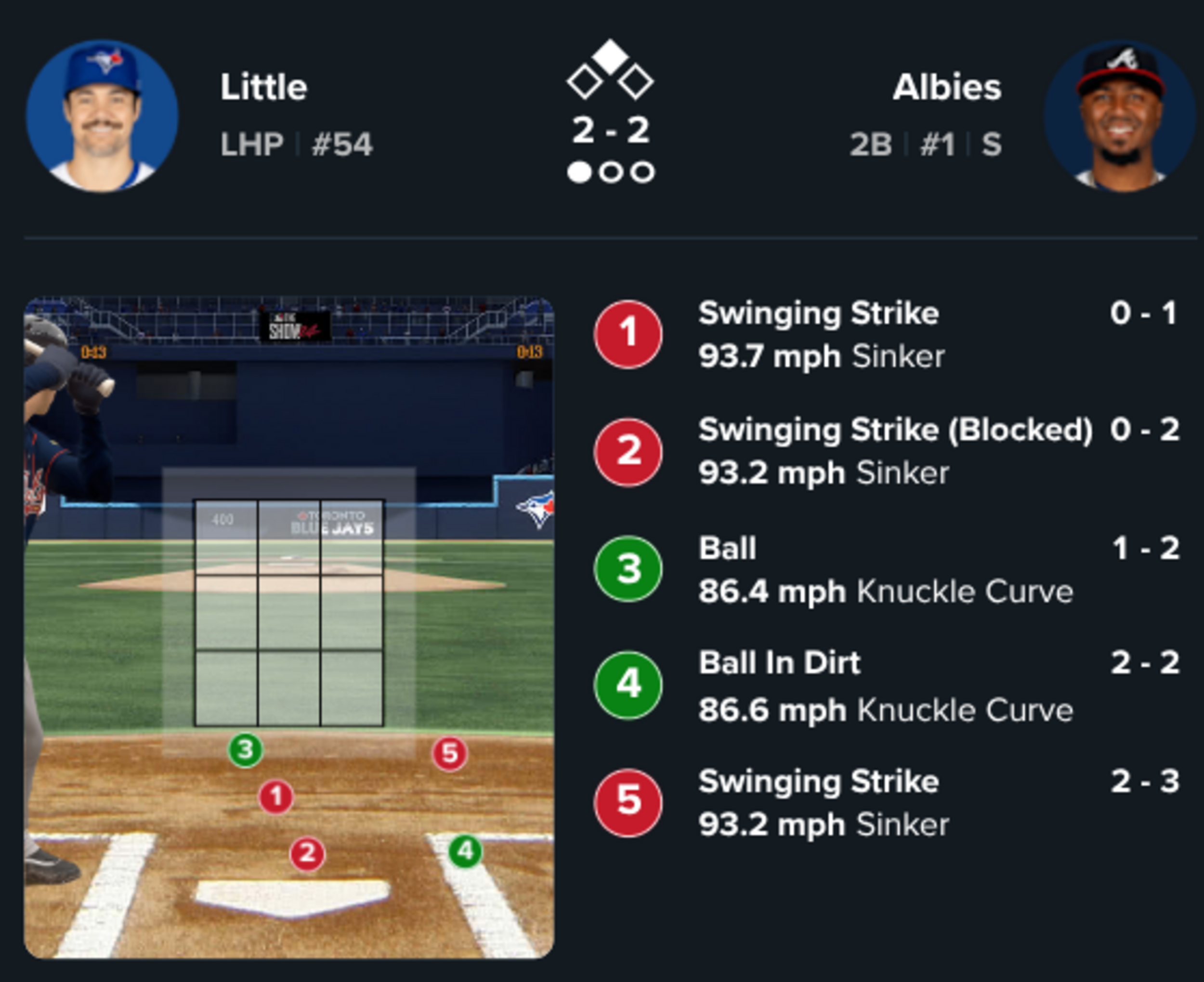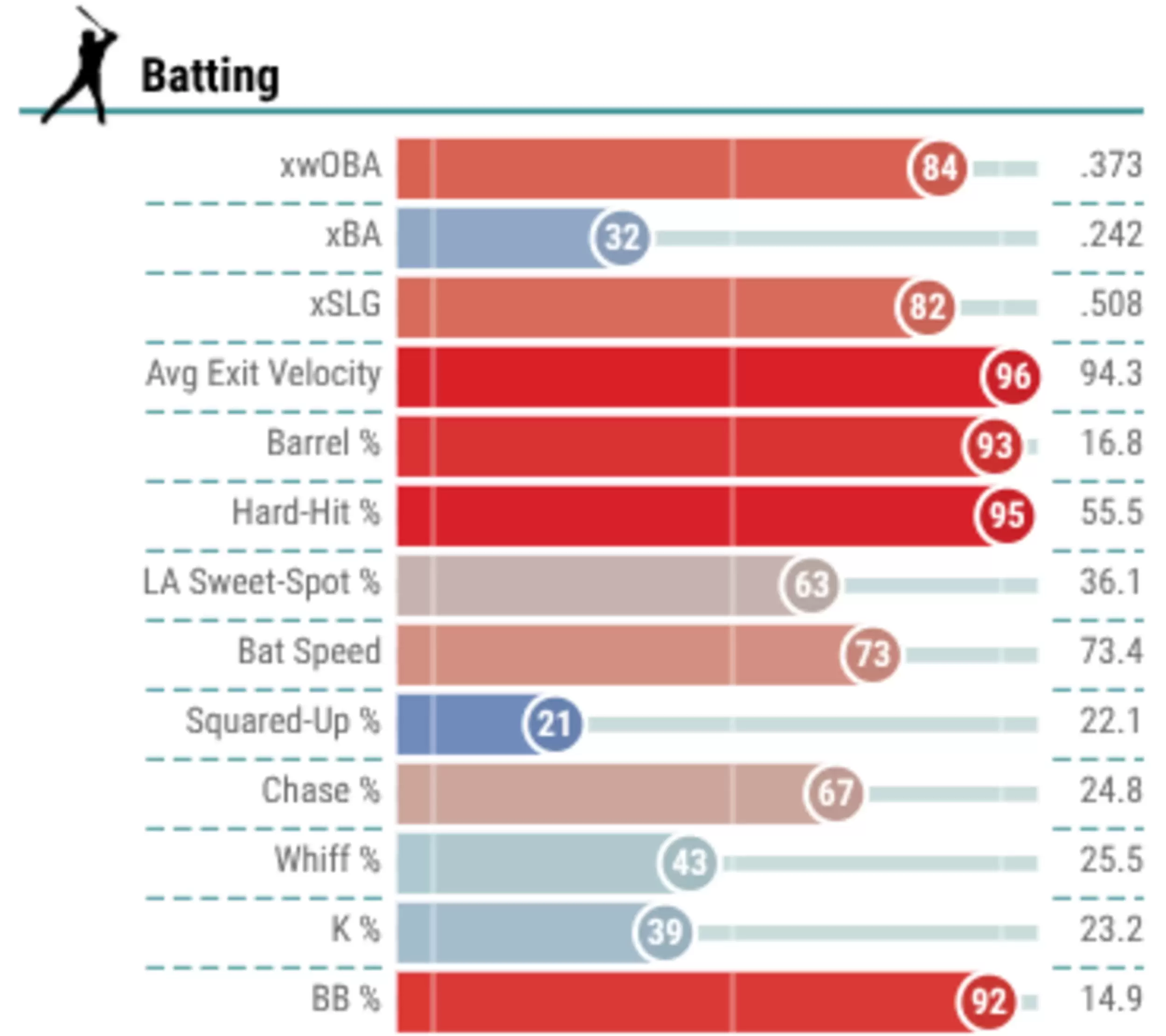
Stats taken prior to play on May 19.
The Atlanta Braves have surged back to above .500 after a very worrisome start to the year.
While climbing back is a step in the right direction, it doesn’t erase the offensive inconsistencies that have plagued this team through the first portion of the season. Too often, Atlanta’s lineup has looked flat and has relied on the pitching staff to keep them in ball games.
The margin for error is thin in a loaded National League, and the Braves simply can’t afford to keep waiting for their stars to wake up. This team still boasts one of the most talented rosters in baseball, but the Braves won’t reach their full potential unless stars such as Michael Harris II, Ozzie Albies, and Matt Olson turn their cold streaks around.
For the Braves to stay in the playoff picture, they need much more from this trio sooner rather than later.
Michael Harris II
Michael Harris is just three seasons removed from a Rookie of the Year campaign. The 24-year-old has cemented himself as a core member of the Atlanta Braves’ future and a steady presence in center field.
This season, however, Harris has struggled to find his rhythm. He’s currently slashing .222/.258/.339 with a .597 OPS and 60 wRC+.
Looking deeper, his hard-hit percentage (40.0%, 36th percentile) and barrel rate (6.0%, 27th percentile) are both the lowest of his career. Being a career 50.5% ground-ball hitter with an average launch angle below seven degrees, Harris simply can’t afford to make weak contact.
Of course, the season is far from over and there’s plenty of time for a turnaround, but the early struggles are still cause for concern.
The good news? Underlying metrics suggest better days are ahead. Harris currently has a .267 xBA (.222 BA), .388 xSLG (.339 SLG), and a .303 xwOBA (.259 wOBA), which all indicate that he’s been better than his actual stats suggest.
Since the calendar flipped to May, there have been even more encouraging signs.
Harris has a 0.40 BB/K ratio this month, as opposed to his 0.19 in March/April. More importantly, he’s raised his hard-hit percentage from 24% in March/April to 34%. Harris has also excelled in late-game, high-leverage situations with a .350 BA and a 1.010 OPS in 26 plate appearances, according to FanGraphs.
Defensively, Harris continues to shine. He’s already tallied +4 Outs Above Average (95th percentile) and has yet to record an error. He remains one of the elite gloves in the game.
MICHAEL HARRIS II
— Just Baseball (@JustBB_Media) May 13, 2025
ONE OF THE BEST CATCHES YOU WILL EVER SEE
pic.twitter.com/uVPBM1JgAU
Ideally, Harris’ left-handed bat and speed combination would make him a great fit near the top of the order, but his lack of patience and production has pushed him down the lineup.
We’re starting to see the signs of improvement. With a long season still ahead, he can be a major difference-maker in the Braves’ playoff push.
Ozzie Albies
While Harris has shown signs of turning things around, there’s real concern surrounding Ozzie Albies.
The longest-tenured Brave and veteran leader, Albies has struggled mightily to start the year. He’s currently slashing .225/.284/.332 with a .616 OPS and 72 wRC+, which are all career lows. His hard-hit percentage of just 26.9% (5th percentile) is a significant drop from his career average of 32.9%.
What’s most frustrating about Albies’ struggles is that his swing decisions haven’t changed. His 34.6% chase rate and 36.5% out-of-zone swing percentage are in line with his career norms. That approach can be tolerated when he’s slugging 25-plus homers and carrying a .700+ OPS, but when he’s barely batting above the Mendoza line it becomes a major liability.

And unlike Harris, the expected stats don’t offer much optimism either. His .234 xBA and .361 xSLG are just marginally above his actual averages.
To put it bluntly, Albies needs to figure things out at the plate. He’s looked like an automatic out more often than not. Every year, I’ve pounded the table for Albies to be mentioned among the game’s top second basemen, but so far in 2025 he’s made me look foolish for doing so.
That said, I’m still a believer. I think he’ll make the necessary adjustments and find a groove. Maybe 25 homers is off the table this year, but if Albies can give Atlanta a league-average .700 OPS and 100 wRC+ the rest of the way, it would go a long way in lengthening this lineup.
Matt Olson
Perhaps the most polarizing name on this list is Matt Olson. He’s carried the unfair burden of being “the guy who replaced Freddie Freeman”, a label that some fans simply refuse to move past.
Since arriving in Atlanta, Olson has been objectively excellent. From 2022–24, he slashed .257/.349/.513 with an .862 OPS, hammering 117 homers and driving in 340 runs.
This season, however, has been more of a struggle. Olson is slashing .240/.353/.444 with a .797 OPS. It was a slow start in May for Olson, as he was hitting just .196 with a staggering 34.9% strikeout rate before going 7-for-12 over the weekend against the Red Sox. Perhaps that’s what he needed to get going offensively.
At times, his plate appearances have looked completely non-competitive. However, like Harris, there are signs pointing toward a breakout.

Olson has been crushing the ball. His 57.1% hard-hit percentage would be the highest of his career, and his 14.7% walk rate is the highest of his career since his rookie season.
He’s also been fairly unlucky, as his xBA is 13 points higher and his xSLG 94 points above his actual marks. His 89th-percentile xwOBA (.389) further supports the idea that the production is coming.
Simply put, the more Olson makes contact, the more reason we have to believe a turnaround is on the horizon. Right now, frustration is showing, and it’s led to an uptick in strikeouts. Once he gets a little momentum and his batted-ball luck shifts, we should see the real Matt Olson show up in a big way.
My Outlook
I know there’s a crowd out there that doesn’t care for expected stats. It’s a newer way of thinking, and some fans just want to see results on the box score.
I’m not here to tell you how to think, but I will say this: There’s an overwhelming amount of evidence supporting the value of expected and underlying stats.
Let’s just look at Drake Baldwin’s stats so far this season as an example.
| BA | xBA | SLG | xSLG | wOBA | xwOBA | |
| First 4 Games | .067 | .277 | .067 | .674 | .098 | .415 |
| Current | .357 | .316 | .583 | .546 | .426 | .388 |
In his first four games, anyone watching closely could tell a breakout was coming. He was demolishing baseballs and putting together veteran at-bats, even when the box score didn’t reflect it.
As time went on, not only did Baldwin’s performance rise to meet his expected stats, he started benefiting from some positive regression as well.
That’s why it’s fair to expect both Michael Harris II and Matt Olson to rebound as their metrics normalize. Even Ozzie Albies, despite the rough start, has a strong enough track record to suggest he’ll finish closer to his career .268/.320/.463 slash line.
The Braves have clawed their way back into the playoff picture despite these lackluster offensive performances. With Ronald Acuña Jr. and Spencer Strider set to return very soon, reinforcements are on the way. But if Harris, Albies, and Olson can all begin to trend back toward their norms, the sky continues to be the ceiling for this team.
More must-reads:
- Reds OF is the only player since 1900 with this impressive feat
- Three-time All-Star announces retirement from baseball
- The 'Active MLB players to hit .300 multiple times' quiz
Customize Your Newsletter
 +
+
Get the latest news and rumors, customized to your favorite sports and teams. Emailed daily. Always free!







